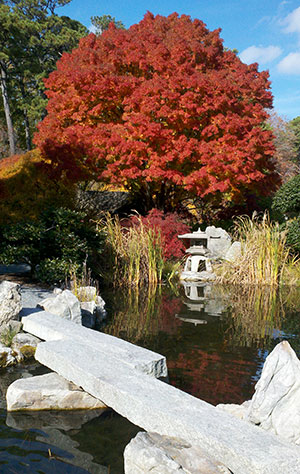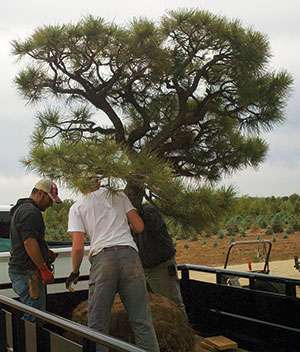Offering Japanese gardens has been both profitable and fun for this Wyoming landscape company.
When Aaron Rodolph, president of Rodolph Brothers, based in Casper, Wyo., first started reading about Japanese garden design, he was amazed how much of the elements he’d already been incorporating into his projects. It’s all about natural flow and placing boulders in just the right way—design elements that Rodolph realized he was already trying to achieve. Since learning more about Japanese gardens, which typically include water, rocks, architectural elements and trees and shrubs, Rodolph has gone on to offer them specifically as a service.

Regardless of whether or not a client asks for a Japanese garden, Rodolph instinctively incorporates similar design elements into his projects, such as natural flow, simplicity and asymmetry, to make the project look more natural.
“I always find that clients end up being struck by the design and saying, ‘Those boulders look amazing,’” says Rodolph. “They don’t realize our eyes are drawn to having things laid out in order and in specific numbers. So we’ll continue to use some of these design principles—such as boulder placement and plantings—regardless of whether it’s a dedicated Japanese design or not.”
But customers who know that Rodolph has studied Japanese gardens specifically ask for them on their landscapes. In those cases, Rodolph strictly adheres to all of the design principles of the art. “I want to ensure that I’m being true to the culture with the design,” he says.
Rodolph acknowledges that Japanese gardens are very specific and may not have broad appeal. He doesn’t promote the service by itself much.
“I’ll bring it up in a design meeting and show some examples of what I’ve done, but if the client doesn’t gravitate that way, it’s not something I push,” he says. “Doing the whole nine yards with the bonsai trees and everything is certainly not for everyone.”
Still, offering Japanese gardens has been a profitable service for Rodolph. It’s been an interesting offering that separates him from his competitors. And the clients who want a true Japanese garden appreciate the intense studying he’s done.
“People definitely see value in our ability to create these gardens,” says Rodolph. “They’re also willing to pay for our time in finding the unique materials that go into them.
“They understand how much work is involved in finding the plants and ensuring the design adheres to certain principles,” he continues. “I’ve found the clients who want them are willing to pay for design fees on top of all the work.”
Though Rodolph says it’s a lot of work, it’s also something he enjoys. “It may require searching from nursery to nursery to find the exact materials but that’s enjoyable and not something I usually get to do,” he says.
He adds that while the company has offered a comprehensive lineup of services over the last 15 years, “it’s design that’s really my passion. Doing these special gardens is very fulfilling for me and ultimately for the client who gets to enjoy it.”

Payton is a freelance writer with eight years of experience writing about the landscape industry.
SERVICE SNAPSHOT
Why Japanese gardens? “When I started reading about Japanese gardens I realized I was already using many of the principles,” says Aaron Rodolph, president of Rodolph Brothers.
Investment? Because Rodolph’s firm already did design/build work, adding this focus didn’t require adding equipment. The biggest investment was the time involved in studying the design principles. “Plus, it’s getting the crews and foreman to buy into the design,” he says. “For us that wasn’t hard. They were amazed they’d already been incorporating a lot of the elements.”
Best tip? “Don’t get so hung up on the look of it—like whether you’re using lanterns or not,” says Rodolph. “Go back to the design principles. It’s more about how many plantings or boulders you choose and how you lay them out. In the end, it’s about creating a sanctuary.”
